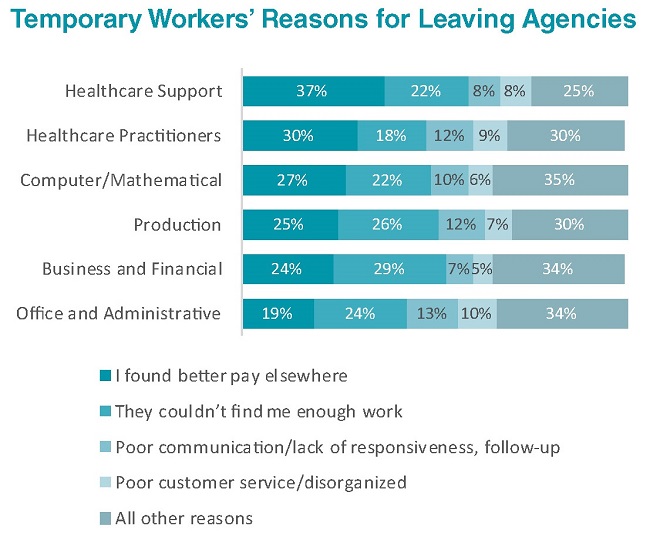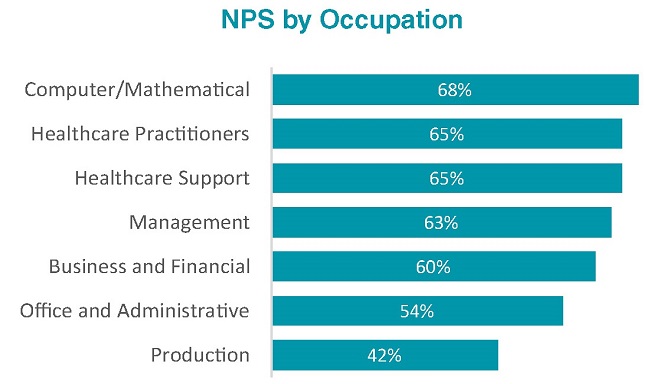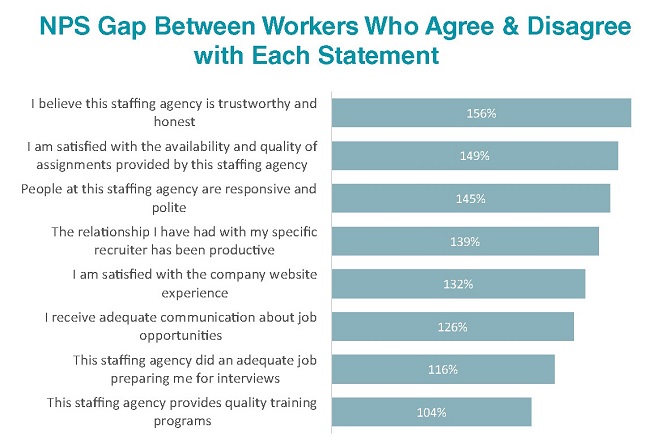From May to June, job openings fell by 605,000 — one of the sharpest declines on record. Despite this decline, openings remain near all-time highs and were 50% greater in June 2022 than prior to the pandemic. Economywide, hiring remains a significant challenge. With only one hire made per every 1.7 openings, the vacancy yield (the ratio of hires to job openings) is at an all-time low. Our Pulse Survey likewise finds that for staffing companies, recruitment difficulty remains near all-time highs. Further exacerbating talent shortages, the Great Resignation continues. Despite some labor market cooling, the quit rate remained near its all-time high at 2.8% in June.
Navigating the ongoing talent shortage requires more than successful recruitment — companies must also prioritize talent retention. SIA’s recently published report, “How to Retain Temps — and How to Lose Them,” can help. Based on responses to the North American Temporary Worker Survey 2022, the report identifies what temporary workers want from staffing firms and what drives them away. Many other details pertaining to temporary worker preferences are included, and related materials from past surveys are likewise incorporated into the report.
We found that what temporary workers most desire from staffing firms is sufficient availability of work, trustworthy and polite staff and quick problem resolution. Conversely, temporary workers abandon staffing firms that fail to communicate, firms that offer low pay and/or fail to pay, firms perceived as incompetent, firms whose clients have unpleasant work environments and firms that are unable to provide enough suitable assignments.
Why temps quit. As part of the survey, temporary workers were asked: “If you used a different staffing firm previously, what’s the main reason you left your last staffing firm?”
Among respondents, the leading two reasons for leaving a staffing firm were an opportunity for better pay and dissatisfaction with availability of work through their former staffing firm. Across occupations, these vary in importance. For healthcare support workers, healthcare practitioners and workers in computer/mathematical occupations, the opportunity for better pay was the most common reason for leaving their old staffing firm; a lack of available work ranked second. For workers in production, business/financial and office/administrative roles, lack of work was the most-cited reason, followed by pay. For all occupations, poor communication by the staffing firm was the third-most-common reason for quitting a staffing provider.
 While staffing firms do not have a large degree of influence over pay rates and client order volumes, they do have complete control over their communications with talent. Largely, staffing firms are successfully matching talents’ preferred means of communication but not meeting the preferred frequency of communication. The most popular frequency identified by temporary workers was once per month, with once per week and twice per month tying for second. While survey results imply that checking in once every two weeks would be a decent rule of thumb, preferences differ among occupational groups. A majority of healthcare practitioners, healthcare support and production workers prefer contact every one to two weeks. At the opposite extreme, most workers in management, business/financial and computer/mathematical roles prefer to communicate with their staffing firm no more than once per month.
While staffing firms do not have a large degree of influence over pay rates and client order volumes, they do have complete control over their communications with talent. Largely, staffing firms are successfully matching talents’ preferred means of communication but not meeting the preferred frequency of communication. The most popular frequency identified by temporary workers was once per month, with once per week and twice per month tying for second. While survey results imply that checking in once every two weeks would be a decent rule of thumb, preferences differ among occupational groups. A majority of healthcare practitioners, healthcare support and production workers prefer contact every one to two weeks. At the opposite extreme, most workers in management, business/financial and computer/mathematical roles prefer to communicate with their staffing firm no more than once per month.
Satisfaction and discontent. Temporary worker satisfaction with the staffing industry was evaluated by calculating net promoter scores (NPS), a metric commonly used to measure customer or employee loyalty. At 55%, the overall NPS indicates that most temporary workers are highly satisfied with their current staffing firm. This score represents a decline of five points from last year’s score of 60% but remains significantly higher than pre-pandemic levels.
Temporary workers across all occupations reported a high NPS, with most yielding an NPS around 65%. The main exception was production workers, whose NPS was a still-respectable 42%.
Separate NPS scores were calculated for temporary workers who agreed or disagreed with various statements about their staffing firm, such as, “I believe this staffing agency is trustworthy and honest.” The differences between groups can illuminate the factors behind worker satisfaction and discontent.
Across prompts, temporary workers who agree with each prompt generally give their staffing firm an NPS around 70%. The difference across prompts is primarily driven by how dramatically negative the NPS scores were from those workers disagreeing with each prompt. Chart 3 shows the difference in NPS across workers who agreed with a given statement and workers who disagreed with the same statement.
 The magnitude of the gaps is dramatic. NPS scores from workers who found their staffing firm dishonest are 156 points lower than the NPS from workers who agree that their staffing firm is trustworthy. Similar impacts are seen to stem from satisfaction versus dissatisfaction with assignments (149 points) and responsiveness and politeness of agency staff (145 points).
The magnitude of the gaps is dramatic. NPS scores from workers who found their staffing firm dishonest are 156 points lower than the NPS from workers who agree that their staffing firm is trustworthy. Similar impacts are seen to stem from satisfaction versus dissatisfaction with assignments (149 points) and responsiveness and politeness of agency staff (145 points).
This exercise suggests that staffing firms suffering from less-than- stellar talent satisfaction can dramatically improve the morale of temporary workers by addressing issues in corporate culture. Ensuring honesty and clarity (to avoid misunderstandings that may be perceived as dishonesty) in communication with talent is paramount.
Likewise, extending quality customer service to temporary workers may significantly improve worker satisfaction and ameliorate worker resignations.








